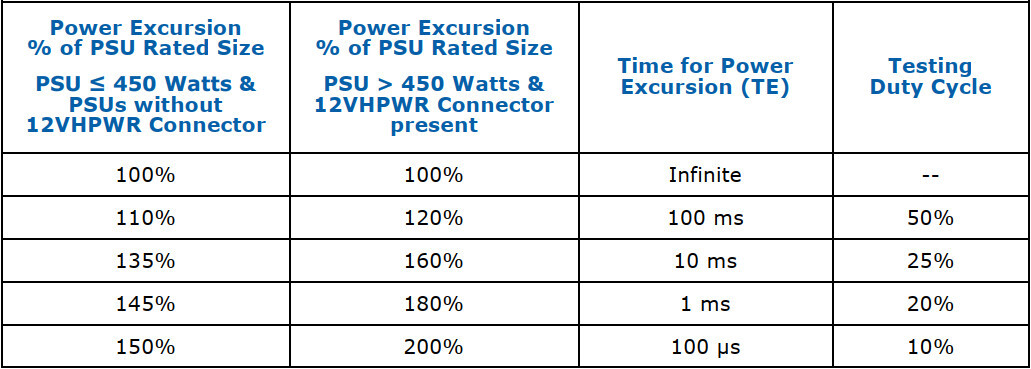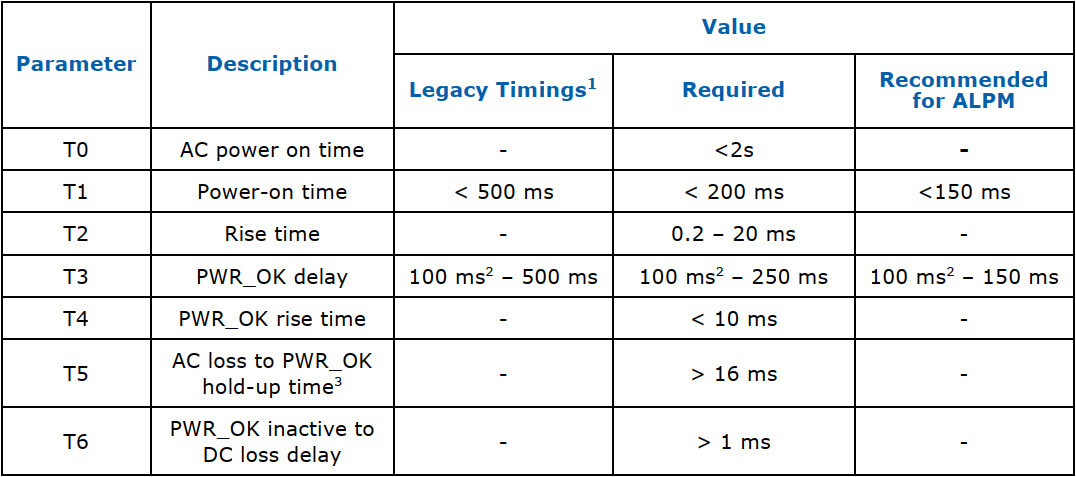D
Deleted member 2731765
Guest
Hi guys,
Just wanted to share this article here at the forums. TPU posted it. This is NOT my article. I will just copy/paste the contents from TPU. Credit goes to Igor's Lab, and Hardware Busters, for bringing this out. It's an interesting read though.
When testing recent high-end GPU launches such as the AMD Radeon RX 6950 XT graphics card, we observed some system reboots that caused due to power-draw spikes (technically known as "excursions").
This is when a graphics card, for a brief moment, draws more power than the connector is capable of supplying, triggering the PSU's electrical protections, and causing a reboot. The new ATX 3.0 specification for the next-generation of desktop PC power supplies enable PSUs with a high tolerance for excursions, and prescribes testing standards to ensure a PSU meets the ATX 3.0 spec.
Aris Mpitziopoulos (crmaris) and Jon Gerow (Jonnyguru) discovered wording in the latest Intel ATX 3.0 specification that could make you pay closer attention to reviews of ATX 3.0-spec PSU, when they're out.
In a Hardware Busters article, Mpitziopoulos clears the confusion that the ATX 3.0 power supply specs by Intel and the PCI-Express 5.0 power specification by the PCI-SIG, are mutually-inclusive—they're not.
An ATX 3.0 PSU is not required to include a 12+4 pin (or 16-pin) ATX 12VHPWR connector, whether or not their nameplate Wattage is above 450 W, which means it's subjected to passing less stressful transient-response tests, particularly the ability to deal with a 200% excursion for at least 100 ms.

The ATX 3.0 also introduces a feature called Alternative Low Power Mode (ALPM), which is hardware-level preparation for OS-level system low-power device states, such as Windows 10 Modern Standby and ChromeOS Lucid Sleep. The ATX 3.0 spec had prescribed certain new hold-up time requirements for PSUs offering ALPM, however it was discovered that these specs only apply to the 3.3 V rail, and not the all-important 12 V.

Put simply, the vagueness in Intel's specs allow the manufacturer of a cheap/mainstream PSU to claim ATX 3.0 readiness by excluding a 12VHPWR connector at any nameplate-Wattage, just so they can evade the steep transient-response testing required to include such a connector.
It allows them to [over]compensate with a large number of conventional 150-Watt 8-pin PCIe connectors, and hope that people use cables included with their next-generation graphics cards that convert a number of PCIe connectors into a high-Wattage 12+4 pin connector.
Just wanted to share this article here at the forums. TPU posted it. This is NOT my article. I will just copy/paste the contents from TPU. Credit goes to Igor's Lab, and Hardware Busters, for bringing this out. It's an interesting read though.
When testing recent high-end GPU launches such as the AMD Radeon RX 6950 XT graphics card, we observed some system reboots that caused due to power-draw spikes (technically known as "excursions").
This is when a graphics card, for a brief moment, draws more power than the connector is capable of supplying, triggering the PSU's electrical protections, and causing a reboot. The new ATX 3.0 specification for the next-generation of desktop PC power supplies enable PSUs with a high tolerance for excursions, and prescribes testing standards to ensure a PSU meets the ATX 3.0 spec.
Aris Mpitziopoulos (crmaris) and Jon Gerow (Jonnyguru) discovered wording in the latest Intel ATX 3.0 specification that could make you pay closer attention to reviews of ATX 3.0-spec PSU, when they're out.
In a Hardware Busters article, Mpitziopoulos clears the confusion that the ATX 3.0 power supply specs by Intel and the PCI-Express 5.0 power specification by the PCI-SIG, are mutually-inclusive—they're not.
An ATX 3.0 PSU is not required to include a 12+4 pin (or 16-pin) ATX 12VHPWR connector, whether or not their nameplate Wattage is above 450 W, which means it's subjected to passing less stressful transient-response tests, particularly the ability to deal with a 200% excursion for at least 100 ms.

The ATX 3.0 also introduces a feature called Alternative Low Power Mode (ALPM), which is hardware-level preparation for OS-level system low-power device states, such as Windows 10 Modern Standby and ChromeOS Lucid Sleep. The ATX 3.0 spec had prescribed certain new hold-up time requirements for PSUs offering ALPM, however it was discovered that these specs only apply to the 3.3 V rail, and not the all-important 12 V.

Put simply, the vagueness in Intel's specs allow the manufacturer of a cheap/mainstream PSU to claim ATX 3.0 readiness by excluding a 12VHPWR connector at any nameplate-Wattage, just so they can evade the steep transient-response testing required to include such a connector.
It allows them to [over]compensate with a large number of conventional 150-Watt 8-pin PCIe connectors, and hope that people use cables included with their next-generation graphics cards that convert a number of PCIe connectors into a high-Wattage 12+4 pin connector.

